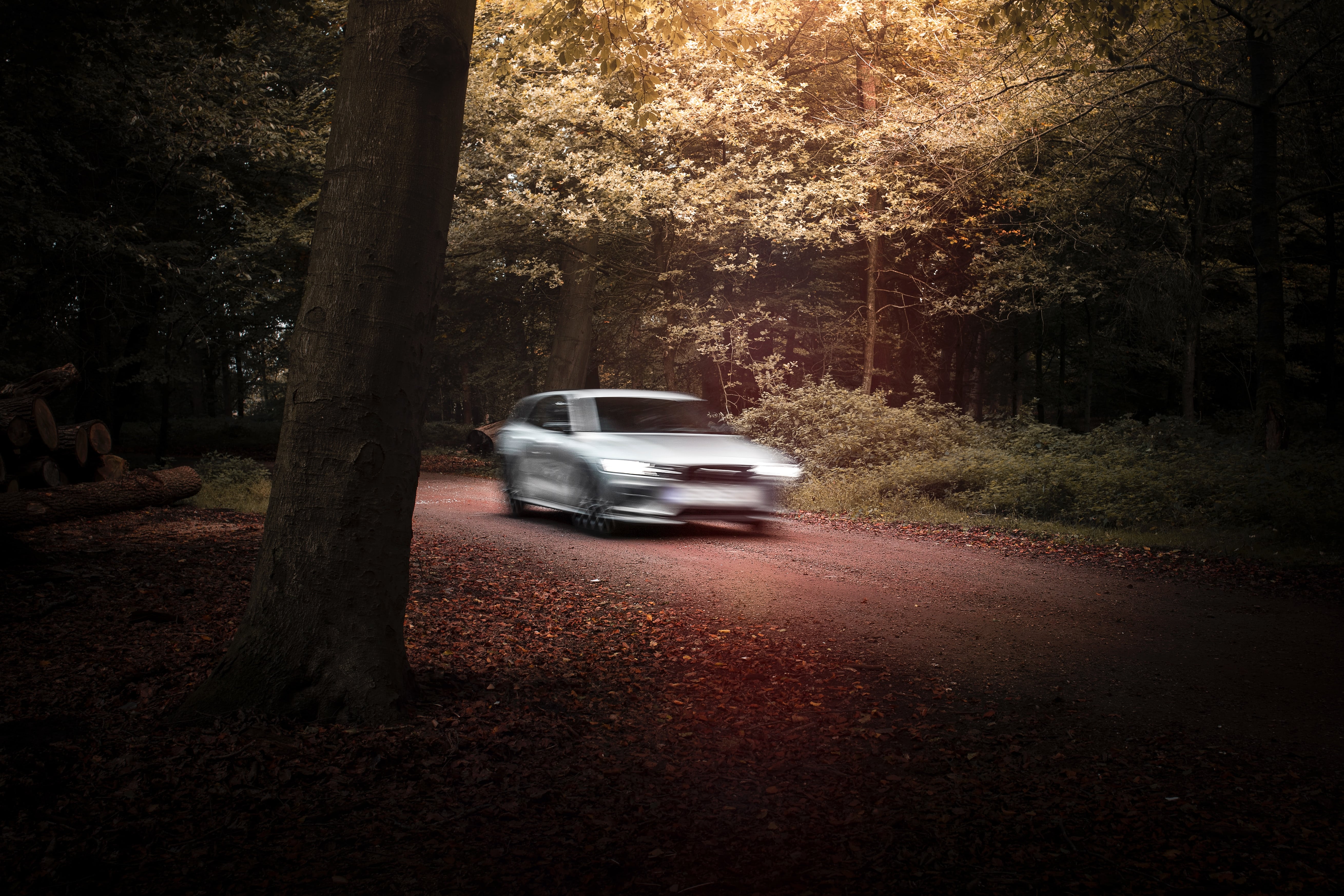Investing a little time and effort into becoming a better driver goes a long way.
Whether you are a new driver keen to create solid habits, or a seasoned car enthusiast wishing to refine your skills, it is never too late to improve your driving style.
These 14 easy steps can help you become a better driver in no time.
Page Contents
- What Makes Someone a Better Driver?
- Invest in Regular Car Maintenance
- Stick to the Speed Limit
- Accelerate Gently
- Avoid Harsh Braking
- Don't Tailgate
- Stay Alert
- Drive Smoothly in Bad Weather
- Stay in Your Lane
- Revisit the Highway Code
- Only Use Your Headlights When Necessary
- Don't Get Distracted
- Take Care of Your Tyres
- Adjust Your Mirrors
- Respect the Road
What Makes Someone a Better Driver?
A good driver is calm and confident in their abilities. They stick to the speed limit and obey traffic laws.
Better drivers are constantly assess the roads around them for any changes or warning signs.
With a good knowledge of the Highway Code, a good driver knows how to act on the road and understands that there is always room for further learning and improvement.
A good driver never drives under the influence and avoids driving when tired.
A better driver takes note of any illuminated warning lights and has them checked out by a professional mechanic as soon as possible.
A good driver has the right attitude, is self-aware, and is courteous towards other road users.
A person working to be a better driver will know what leads to accidents and knows how to minimise these risks.
A good driver knows their own limitations – physically, mentally, and emotionally – and how to overcome them.
Invest in Regular Car Maintenance
It stands to reason that the better you understand your car’s health, the better a driver you will be.
You will be better equipped to spot and respond to subtle changes in your vehicle’s behaviour and know exactly what your car needs and when.
Carrying out routine checks such as correcting tyre pressure, tread depth, and oil levels can make a big difference and help your vehicle run smoothly and safely for longer.
Don’t forget to keep your car clean and make sure that your registration plates are always visible.
You can refer to the owner’s manual for your vehicle to find out exactly when maintenance needs to be performed.
Stick to the Speed Limit
Try not to view the speed limit as a target to hit – you don’t need to drive faster than necessary.
Ignore pressure from drivers who get close to your bumper to try and make you go faster.
Allow extra time for your journey and you’ll get there in plenty of time.
Driving above the speed limit can put you at risk and could land you a fine and points on your licence.
You should adjust your driving based on your environment. Be especially careful around school zones and parks – you need to be able to react quickly to any situation that could arise.

Accelerate Gently
Hard and rapid accelerations can put stress on the engine and transmission, and you can burn through fuel more quickly.
Accelerating and decelerating slowly and smoothly and save you money as you will use less fuel as you drive.
Avoid Harsh Braking
Likewise, you won’t annoy other drivers with your driving habits if you brake gently.
Gradually increase pressure and make sure that you start and finish light when braking.
This will take the strain off your brakes and tyres and can also save you money on fuel.
When entering a bend, make sure that you lower your speed before you enter a corner and accelerate slowly when you are out the other side.
If you brake mid-bend, then you could put your car out of balance and lose control as a result.
Don't Tailgate
Tailgating is a common driving behaviour that can be dangerous and is relatively easy to avoid doing.
When tailgating, you won’t leave yourself enough reaction time in the event of an emergency stop, meaning you could put yourself and the cars around you at risk.
If you are in slow-moving traffic, make sure you leave a gap between your car and the one in front. You can use the 2-second rule to ensure a safe following distance.
Pick a fixed point on the road – like a tree or road sign – and begin counting when the vehicle in front of you passes that point.
This will reduce the likelihood of tailgating and collisions and can give you space to overtake if needed.
If you notice that you are often being tailgating, then you could be driving too slowly, in which case you may need to reassess your driving habits and refresh your knowledge of the Highway Code.
Stay Alert
You should look at a driver’s eyes and hands when at junctions and roundabouts – their indicators could be on by mistake and not be a true reflection of their next move.
When driving in busy areas, don’t assume that pedestrians are aware of your movements. Modern and electric vehicles are especially quiet – a distracted pedestrian may not notice you at all.
To stay safe, we would suggest opening the driver’s seat door with your left hand. That way, your head will angle towards the road as you open the door, so that you can keep an eye out for oncoming cars and cyclists.
When you are turning left a junction, make sure you check your inside mirror for cyclists, too.
Drive Smoothly in Bad Weather
Driving over slippery mud, ice in winter, loose gravel or a rainy road surface can increase the likelihood that your vehicle will skid or be more prone to aquaplaning.
Try to relax and make your inputs gradual so that you have greater control over your car’s movements.

Stay in Your Lane
Switching lanes frequently to beat traffic can be dangerous and can cause traffic to slow down.
When driving on the motorway, try to stay in the inside lane unless you are overtaking.
Don’t hog the middle or outside lanes – you won’t be popular with your fellow drivers.
Check your rear view and wing mirrors before indicating and moving across lanes and stay in the lane as you turn corners.
Revisit the Highway Code
When did you last refresh your knowledge of the Highway Code?
Make sure that you are familiar with the meanings of road signs, road markings, and different pedestrian crossings.
Remember, there could be changes to the law itself to be aware of – meaning a common practice for you may no longer be legal.
Only Use Your Headlights When Necessary
Switch on your headlights at the right moment when it gets dark.
Don’t turn on your headlights near a junction – a driver could think that you are indicating to let them out.
It goes without saying that the daytime running lights (DRLs) should not be used after dusk – but it can be easy to forget to turn them off.
Visibility can be significantly reduced when driving in fog. According to the Highway Code, you must use your headlights when you cannot see for more than 100 metres.
You can also use your front and rear fog lights in these conditions – but you must switch them off when visibility improves.
Don't Get Distracted
As mobile phone laws tighten in the UK, it is now even more important than ever that you put your phone on silent and in a safe location like the glovebox.
Try your best not to fiddle with the satnav or radio as you drive – plan and programme your route before you drive, and put on a playlist that you won’t have to shuffle.
If you are driving with kids in the car, then it may be a good idea to keep them occupied with their favourite book or game so that you can focus on the road ahead.
To keep your concentration, it may be a good idea not to drive with talkative or distracting passengers in the car – you could struggle to pay attention to the road.
Take Care of Your Tyres
Whilst the legal tread depth minimum for tyres is 1.6mm, tyre performance drops significantly at 3mm.
The difference in quality between premium and budget tyres is substantial – it could save you money in the long run to invest in quality tyres now.
You can carry out the 20p tread depth test to find out if you need new tyres.

Adjust Your Mirrors
You should be able to see the driver’s door handle in the bottom left corner of the driver’s side mirror.
Make sure that you check your mirrors before exiting your vehicle – and check them again if you take a moment to pick up your phone or adjust anything in the car before exiting.
Respect the Road
With more drivers and distractions on the road than ever, it is important to treat the road with respect.
Your vehicle is a complex piece of heavy machinery, and it could cause serious damage if not used properly.
Whilst other people’s bad driving habits are not your problem, it is your job to anticipate someone’s actions on the road and act accordingly so that you can prevent any accidents where possible.
Are you working hard to become a better driver? Tell us how in the comments below!






